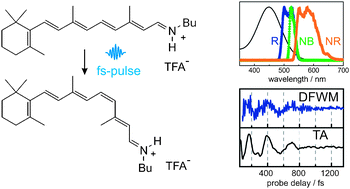Vibrational analysis of excited and ground electronic states of all-transretinal protonated Schiff-bases
Abstract
We report on vibrational coherence dynamics in excited and ground electronic states of all-transretinal protonated Schiff-bases (RPSB), investigated by time-resolved Degenerate Four-Wave-


 Please wait while we load your content...
Please wait while we load your content...